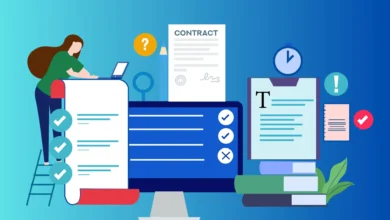
VoIP Phone Features for Business
The best voice-over-internet-protocol (VoIP) business systems can do much more than make and receive calls. Just about any provider can handle call holds, transfers, and forwarding, but more advanced platforms provide predictive dialers, analytics, call management features, and more.
However, no two VoIP providers deliver the exact same feature set, so you’ll need to get picky with which features are nice-to-haves and need-to-haves. This guide will walk you through the best-of-the-best VoIP phone features for business so you know exactly what to look for and provide you with links to additional resources if you’d like to learn more.
Table of Contents
1. Automated Attendant
An automated attendant is a top feature of the best business phone systems because it can eliminate the need for a live receptionist. This feature answers all of your incoming calls and sends them to their desired extension using call routing rules.
The most basic auto-attendants offer simple features like prerecorded messages and a small selection of hold music options. These are useful for solo workers and freelancers who are looking for some help when it comes to handling call traffic. Many premium VoIP vendors also offer multilevel auto-attendants (also known as interactive voice response, or IVR) with features like customizable greetings or the ability to route to multiple numbers. This functionality is ideal for more established teams with high call volumes.
Feature availability: Just about every VoIP platform provides an automated attendant. Some are basic voice recordings with a business phone extension dialer, while others are more advanced IVR systems. You’ll usually find this feature on a VoIP provider’s most basic paid plan.
You can learn more about these providers in our article on the best auto-attendant phone systems.
2. Call Forwarding
Call forwarding is a popular business telephony feature that makes sure your customer’s calls never go unanswered. When the feature is activated, inbound calls can be automatically redirected to another extension or phone number.
It is an excellent option for business owners who want to minimize lost sales leads by redirecting calls to a mobile number when no one answers a desk phone. However, call forwarding does not ensure that a lead will never go to voicemail. Thus, some businesses choose to utilize an answering service in addition to enabling this feature.
Feature availability: This is a basic feature from all major providers.
You can also find systems that go beyond call forwarding by learning about the best answering services.
3. Call Hold & Transfer
Call hold and transfer are core features found in most business telephony systems. In basic terms, it works by letting you place a caller on hold and sending them to another extension or phone number.
Feature availability: Most services on the market offer this feature in some shape or form.
Look at our guide to find the providers who stand apart from the rest related to this feature in our article on best call management systems.
4. Call Recording
Call recording is a VoIP module that allows workers to record calls for training and reference purposes. Depending on the service, calls can either be recorded companywide or on an individual, on-demand basis. Some solutions even offer cloud storage space so that you don’t have to use up valuable space on your own network.
Call recording is especially helpful in customer service or sales environments where it can be useful to save important conversations. However, the feature works even better when your system also offers HD voice calling.
Feature availability: Most providers offer call recording, but it usually only becomes accessible at a premium level. Each provider will differ on how much you can record, where the recording is stored, and how to initiate the recording (automatic versus manual).
If your VoIP provider doesn’t offer call recording, consider using one of these top call recording apps.
5. Caller ID
Caller ID provides essential information on callers before anyone on your team picks up the phone. Standard information includes the user’s name and phone number. It can also include the city and state that the person is calling from.
This feature is useful for blocking anonymous or unknown calls. Additionally, outbound caller ID allows extension users to select which ID to use when placing a call. Caller ID is ideal for anyone using their personal device for work.
Feature availability: This is a default feature of all major VoIP providers.
6. Call Screening
Call screening puts workers in control of which calls to take. In basic terms, caller ID provides information on who’s calling so that the user can take the call, decline it, or send it to voicemail. It can also ask incoming callers to identify themselves and relay that information.
Call screening is great for busy staff who can only afford to take the most worthwhile incoming calls at any given time.
Feature availability: This is a common feature from most VoIP platforms.
You can learn how to make the most of this feature in our more in-depth article on call screening.








